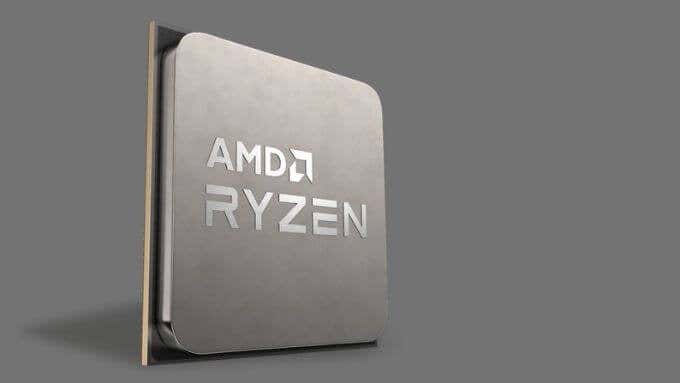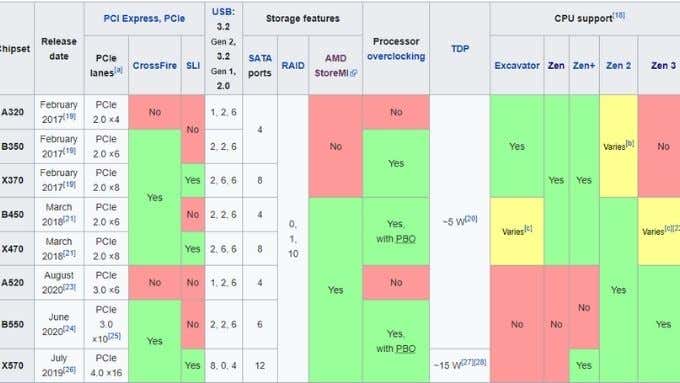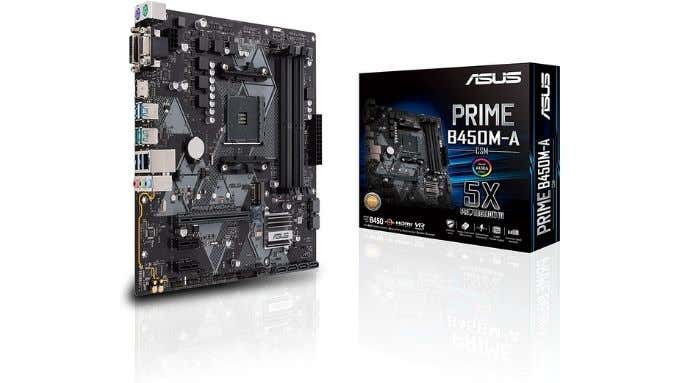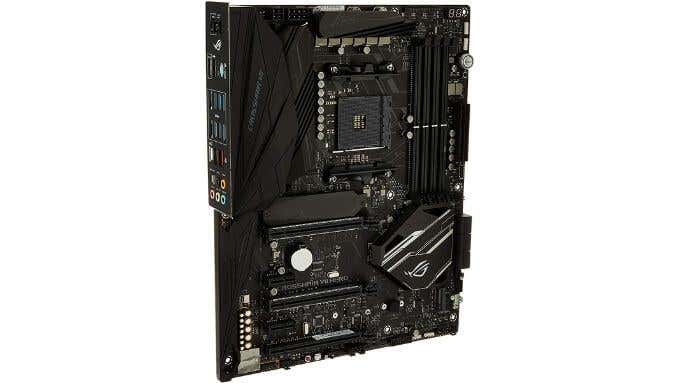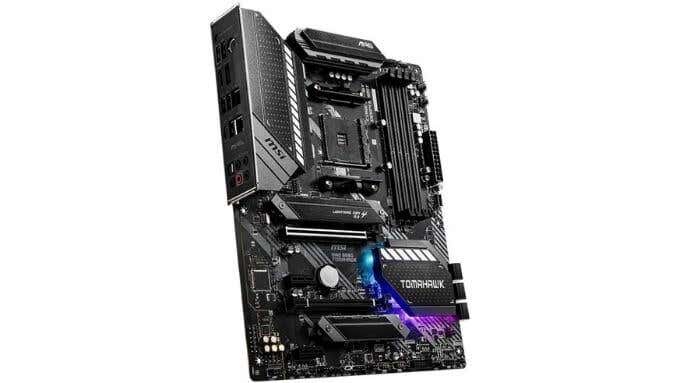The main reason this is so hard is thanks to AMD’s commitment to a single CPU socket. Specifically, the AM4 CPU socket, which hosts all three generations of Ryzen CPU. This does not include the professional-grade Threadripper CPUs. Despite being Zen-based, just like Ryzen, Threadripper CPUs have their separate socket. Before we can look at which motherboards are the best option for your Ryzen CPU, there are some crucial aspects of AM4 socket compatibility you need to know.
A Note on Chipset and CPU Compatibility
All Ryzen CPUs use the AM4 socket, and in theory, you should be able to use any Ryzen CPU with any AM4 motherboard. However, in practice, the situation breaks down like this:
The latest Zen 3 -based Ryzen CPUs only work with 500- and select 400- series chipset motherboards. Anything older than that is out.Some motherboards require a firmware update before they’ll support the latest Ryzen CPUs. This creates a chicken and egg situation where you need to boot them up and update them with an older compatible Ryzen CPU. Although some motherboards now support BIOS updating without a CPU present.
There are currently eight chipsets, and any current AMD AM4 socket motherboard will be equipped with one of them. Consider this table from Wikipedia: As you can see, each chipset supports different PCIe, USB, and memory speed standards. At the same time, specific Ryzen CPUs also have limited support in these categories. So if you use a CPU with faster memory support than the chipset that hosts it, you’ll always get the slower of the two speeds. The reverse is also true, so whenever possible, you need to match a given chipset with the capabilities of the CPU in question. We’re going to be highlighting several motherboards that are some of the best choices for each respective generation of Ryzen CPU, but there are some limitations. We will not include Mini ITX motherboards but instead limit the selection to mainstream Micro ATX and ATX motherboards, designed to fit mid- and full-size desktop tower cases.
The Best Motherboards for Zen 1 & 2 Ryzen CPUs
Here we’re going to highlight two motherboards that are best for Zen 1 and 2 Ryzen CPUs. Since the B450 and X470 chipsets are the latest chipsets to support Zen 1 and 2 Ryzen CPUs, we’ll focus on them.
The Best Budget Choice: ASUS Prime B450M-A at $56
The Asus Prime is a lot of board for very little money. It’s also one of those rare motherboards that support all three generations of Ryzen. Just make sure you have the latest firmware update. According to the official CPU support site, the B450M-A can handle even the mighty 16-core Ryzen 9 5950X. So if you’re only looking for a Ryzen 1 board for now, you can rest assured that there’s plenty of upgrade headroom for the future. But, an entry-level motherboard like this doesn’t have the power delivery system to allow overclocking high-end CPUs. It’s paired best with more modest mainstream CPUs, but you don’t have to shy away from a good CPU deal if you run across one. For its cost, it’s feature-complete, with four RAM slots supporting up to 64GB of memory, three PCIe slots, and six SATA 3 ports. On the downside, there’s only a single M.2 slot and no USB-C, but the B450M-A Prime is already offering far more than you’d expect at this price.
Yesterday’s Flagship: ASUS ROG Crosshair VII Hero at $279.99
X470 motherboards are becoming a little harder to find but offer the best bang-for-buck if you’re looking to build a high-performance system for gaming or other heavy-duty workloads. While the X570 has superseded the X470, the price difference is significant. For example, this ASUS ROG board is a full $100 less expensive than its X570 replacement. This board supports up to the Ryzen 9 5950X, so it’s an excellent choice for Zen 3 CPUs, but it doesn’t have the latest features of the X570 chipset. What you do get is support for up to 128GB of RAM, three full-length PCIe slots, Aura Sync RGB lighting support, and tons of overclocking and fan-control features. There are also two M.2 slots and oodles of USB 3 ports and one USB-C port. Even at this relatively high price, this is a lot of board for the enthusiast on a budget.
The Best Motherboards for Zen 3 Ryzen CPUs
If you’ve got the latest generation of Ryzen CPU, then you should first look at the latest generation of chipsets like the B550 and X570 chipsets. These let you take full advantage of Zen 3 CPUs and cover both the mainstream and enthusiast segments of the market. Let’s look at a top example of each.
Mid-range Monster: MSI MAG B550 TOMAHAWK Gaming Motherboard at $164.99
The advantage of the B550 chipset is that it offers PCIe 4.0 compatibility at reasonable prices. That matters, thanks to the new generation of PCIe 4.0 NVME SSDs, which promise blistering 7GB/s and higher transfer speeds. It has the sort of performance we’ve seen in PlayStation 5 console testing but is only slowly entering the PC market. While there are cheaper B550 boards on offer, the Tomahawk from MSI offers the perfect balance of performance and price, in our opinion. Of course, if you only want an office computer, you can probably look for a less expensive model. But if you want everything that Zen 3 can give you, this is where the fun begins. You get support for up to 128GB of 4866Mhz DDR 4, two M.2 slots, RGB lighting support, and extensive additional cooling features. Unless money is no object, this might very well be the ideal choice for both Zen 3 gamers and power users.
The Wallet-buster Flagship: Gigabyte X570 AORUS Xtreme at $700 (!)
Did the price tag on this Gigabyte board knock your wind out? While some gaming boards touched the $1000 mark in the past, this is still in the stratosphere of high-end gaming and performance motherboards. We’ll say right off the bat that this motherboard is only for those Zen 3 users who want to use the top-end CPUs such as the 5950X, especially if you’re going to overclock it to the limit. The AORUS Xtreme offers a 16-phase voltage regulation design and bleeding-edge cooling technology. This ensures that if anything is going to fail during overclocking, it won’t be the motherboard itself. One neat feature of this board is that you can flash the BIOS from a USB thumb drive without booting the system. This means you can use the latest CPU generation without needing an older CPU to boot the system. Other notable features include three M.2 slots with heatsinks, integrated WiFi 6, and up to 128GB of DDR4 5100. The bottom line is that this is pretty much as good as it gets. So if the price doesn’t bother you, there’s no reason to hesitate!
